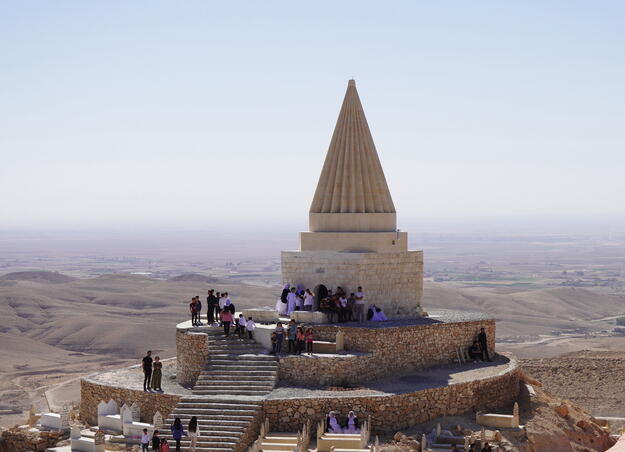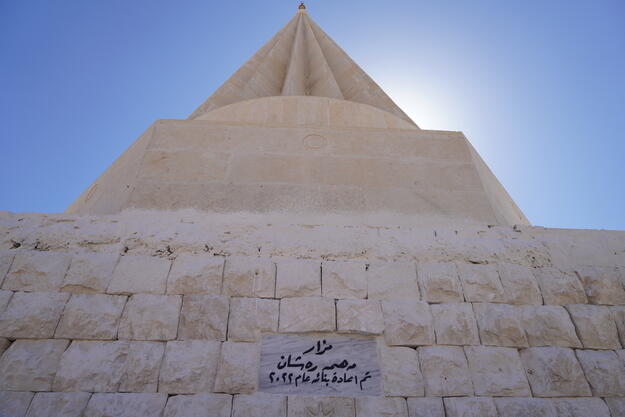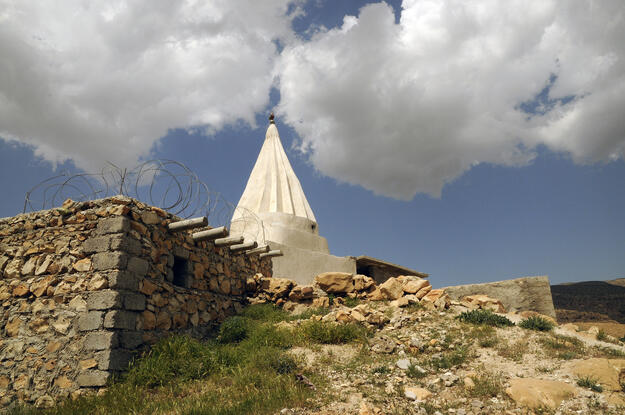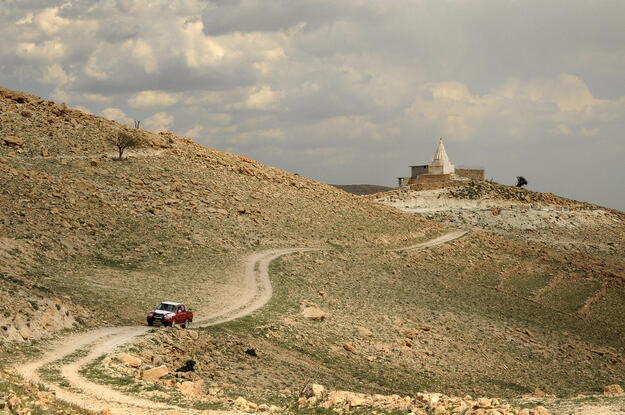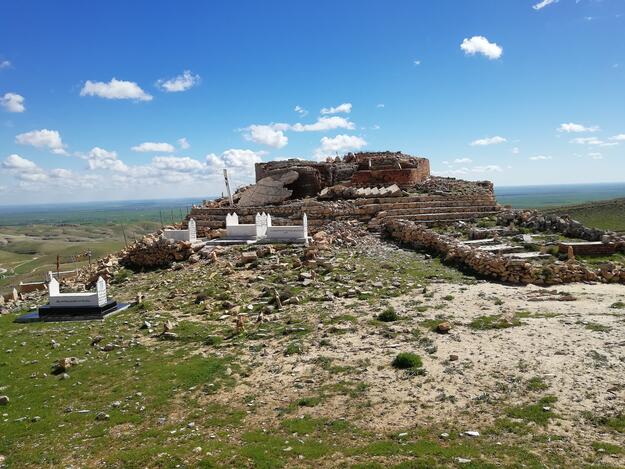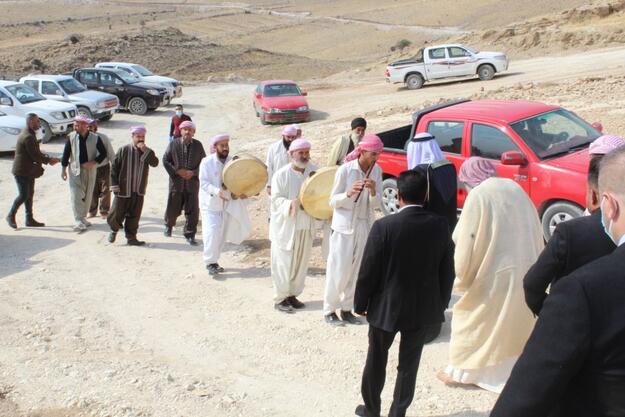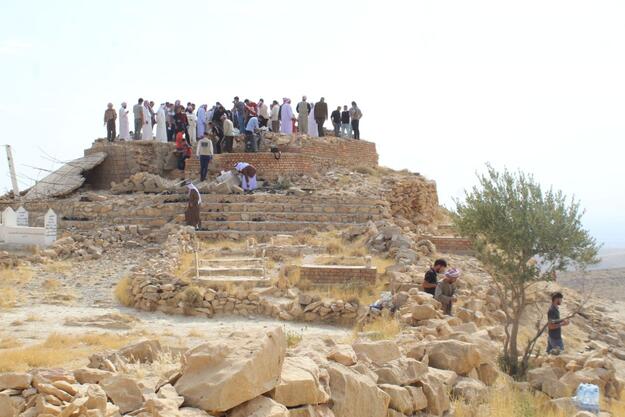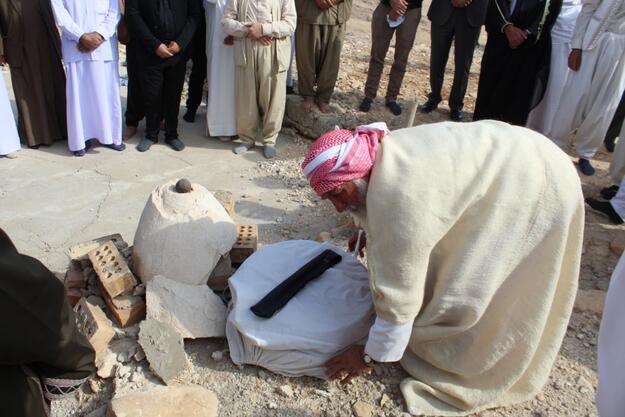Mam Rashan Shrine
Site History and Significance
A Campaign of Destruction
In August 2014, ISIS set out on a genocidal campaign against the Yazidi people of northern Iraq. Fighters for the extremist group swept across the Sinjar region, a historic homeland of the Yazidis, seeking to eradicate their faith through murder, abduction, enslavement, and sexual exploitation. In its English-language magazine, the organization would brag about its treatment of the Yazidis, which included the destruction of their places of worship: in Sinjar and the twin towns of Bahzani and Bashiqa near Mosul—another Yazidi population center—47 Yazidi sites were destroyed. Among them was Mam Rashan, named for the saint associated with agriculture, rain, and the annual harvest.
The Yazidi People of Northern Iraq
The Yazidis inhabited their lands around Mount Sinjar in northern Iraq since at least the twelfth century. They lived in small mountain villages until the 1970s, when they were systematically removed and concentrated in collective towns in an attempt to increase the Ba'ath Party's control in the north of the country. Despite limited healthcare, education, and job opportunities, the community remained near Sinjar, never abandoning their monuments dedicated to important personages in the Yazidi religion, such as Mam Rashan. Until 2014 community members paid frequent visits to these shrines to worship and mark important occasions of life. Like many other shrines in Sinjar, Mam Rashan was destroyed in 2014 by ISIS.
Our Involvement
The 2020 World Monuments Watch
While ISIS control of the area has now collapsed, only a fraction of the Yazidi population has returned to Sinjar. Around 180,000 Yazidis remain displaced within Iraq, and many others have found shelter outside the region. For those Yazidis who have returned to Sinjar, and for those wishing to return, the reconstruction of their old shrines is an expressed need and priority; reestablishing a thread of continuity with the past is a key process on the road to recovery after a violent rupture. By listing the site on the 2020 World Monuments Watch, World Monuments Fund (WMF) called for joint efforts to rebuild Mam Rashan Shrine with the goal of establishing mutual respect for minority communities that have been denied equality and recognition in the past. This nomination resulted in a grant from ALIPH (International alliance for the protection of heritage in conflict areas) for the reconstruction of the shrine according to its original design.
Mam Rashan Revived
A partnership with the Eyzidi Organization for Documentation (EOD) allowed reconstruction work to start in 2020. A blessing ceremony to celebrate the beginning of the work was held in the presence of the highest religious authorities in Sinjar and Lalesh. This reconstruction was and will remain an opportunity to spread best practices in preservation and construction techniques within the Yazidi community and experts. The works on site were proceeded by data collection, graphic documentation, materials and construction studies, materials mapping, and a damage assessment of remaining structure. Workshops on the production of traditional lime mortars and building techniques were provided, followed by the physical reconstruction of the shrine on its original site. The reconstruction works also included two additional buildings, a community hall and a sacred space (al-kharqa), in addition to landscaping work around the site. The project was capped by a community Watch Day celebration of the completed work on September 30, 2022.
Learn more
World Monuments Fund safeguards cultural heritage around the globe, ensuring our treasured places are preserved for present and future generations.
Sign up for our newsletter to receive regular updates on our projects, stories from the field, upcoming events, and more!
World Monuments Fund’s work at Mam Rashan Shrine has been made possible, in part, by support from ALIPH.

